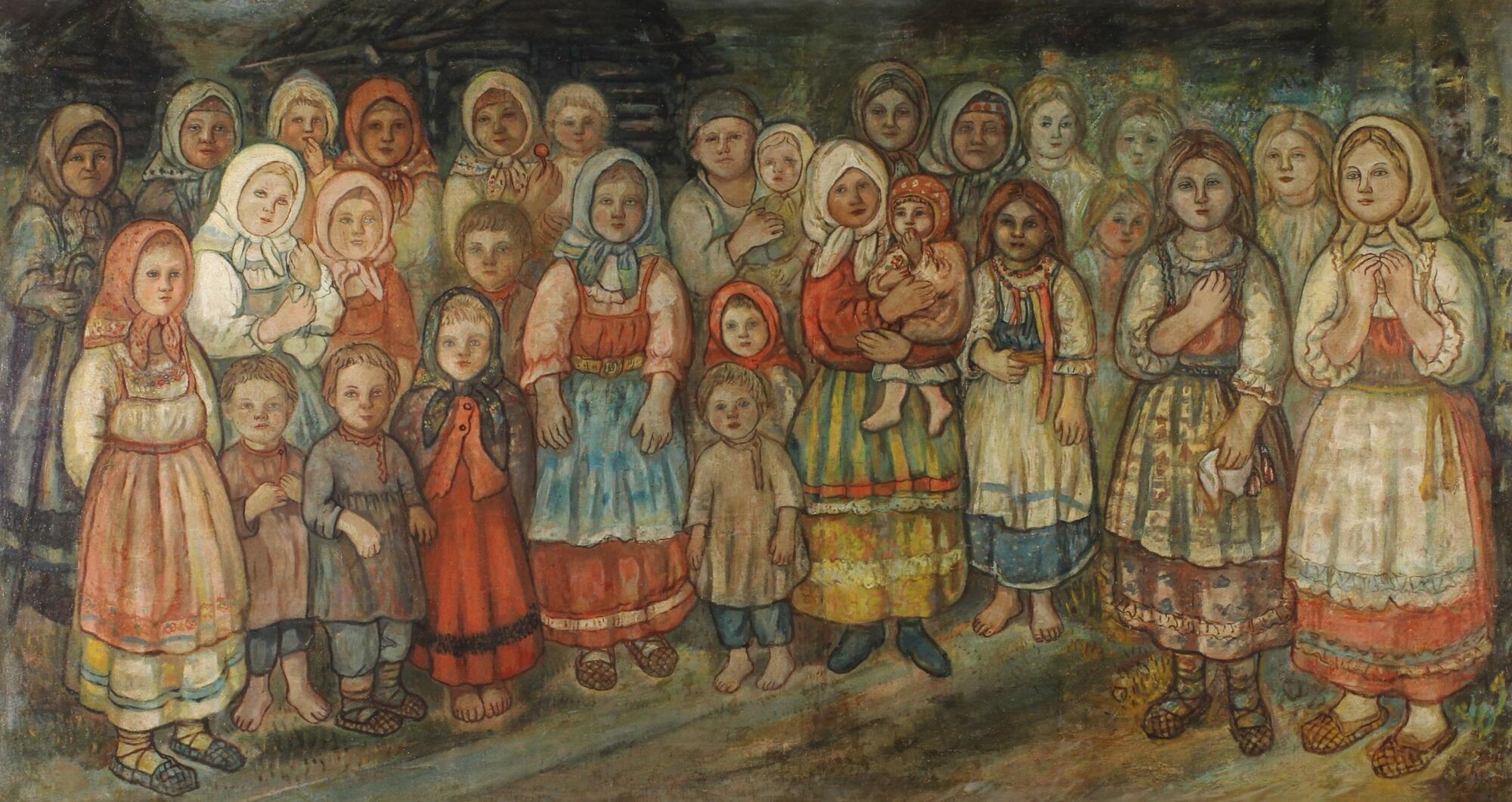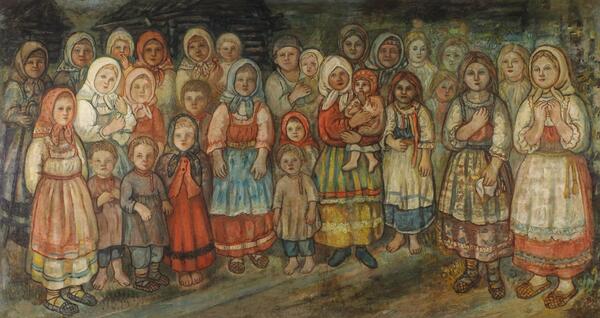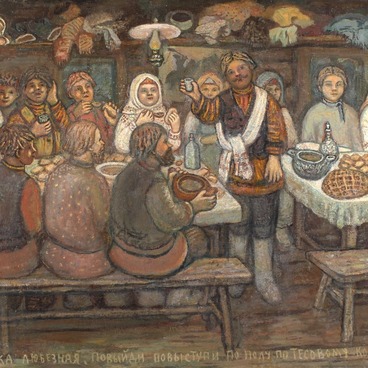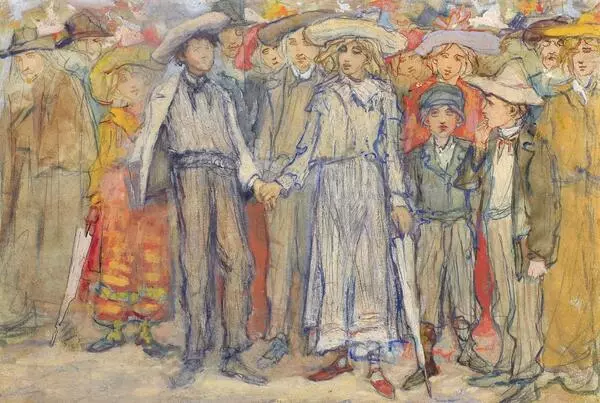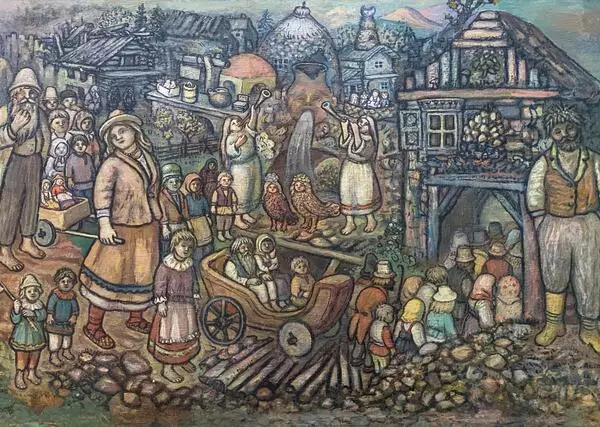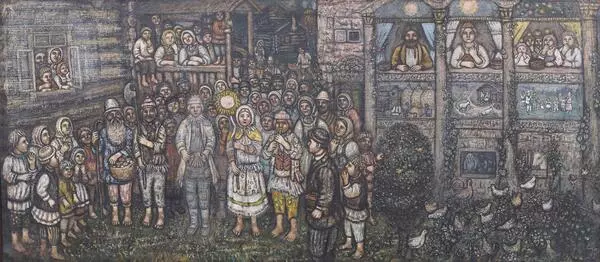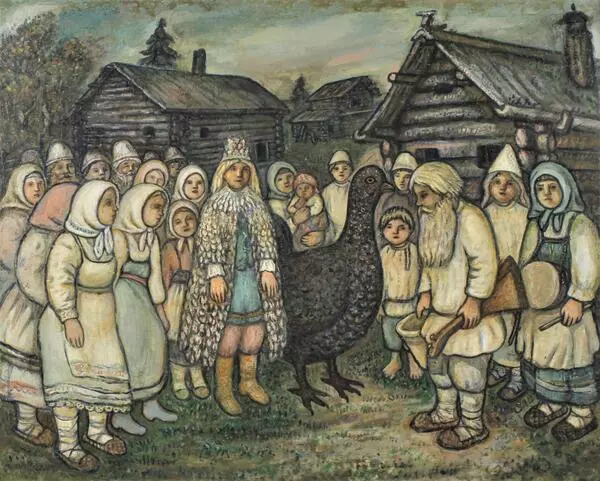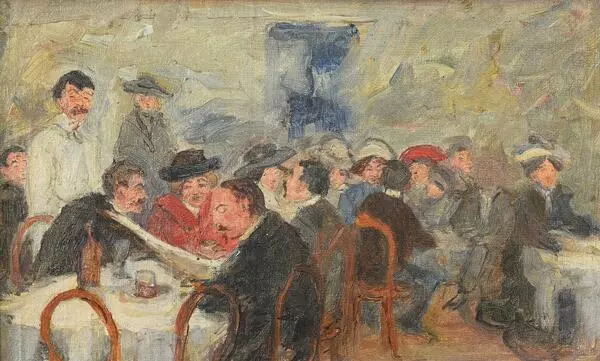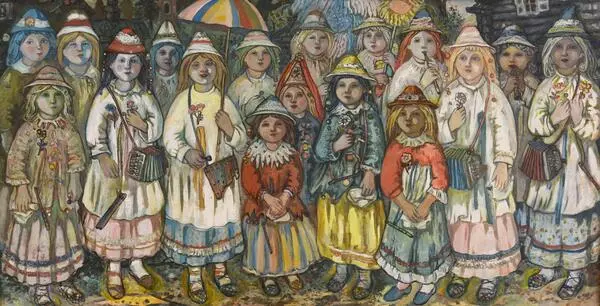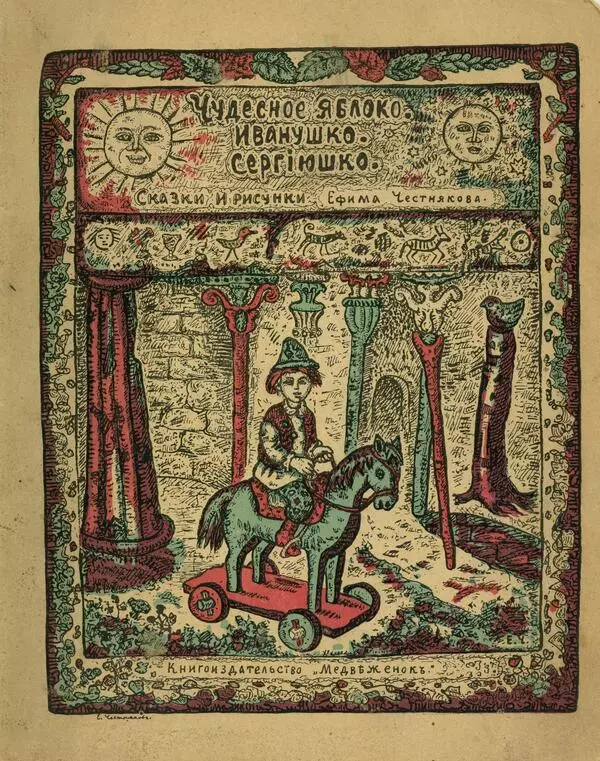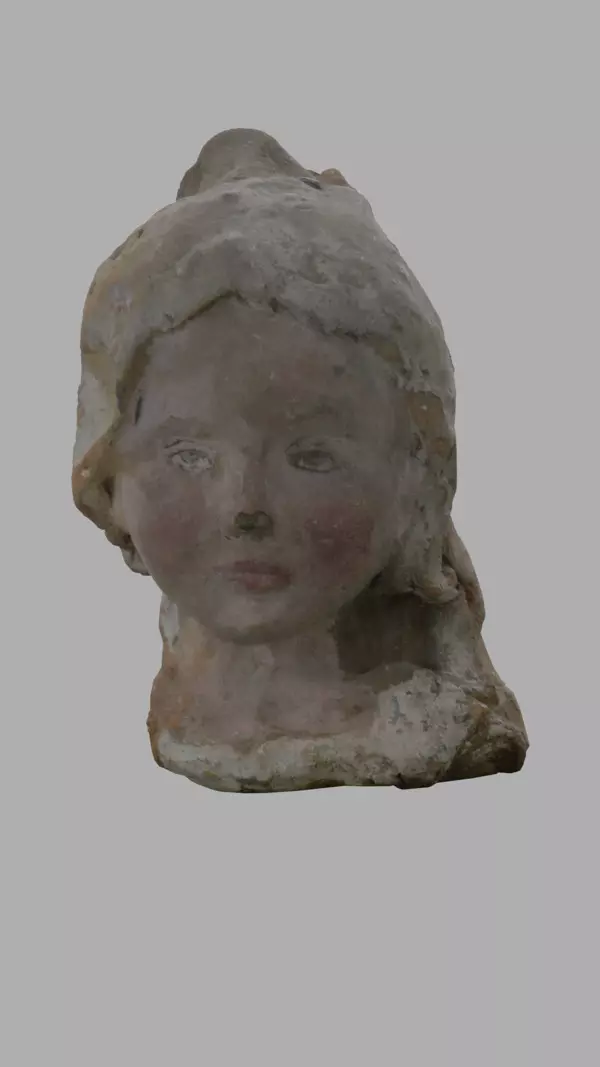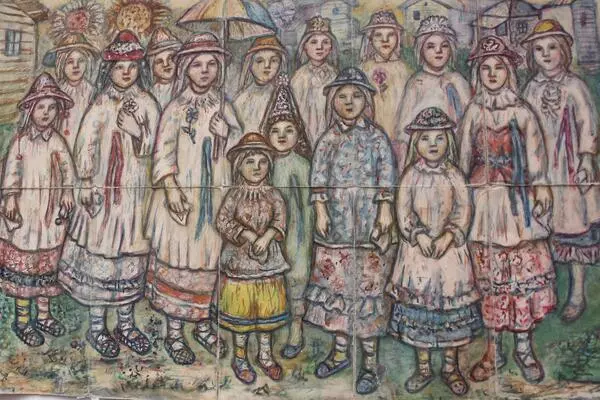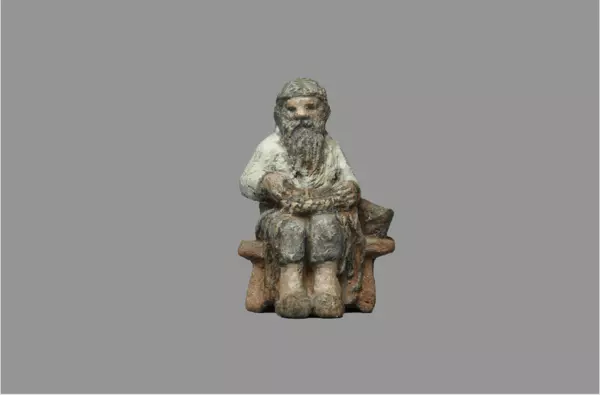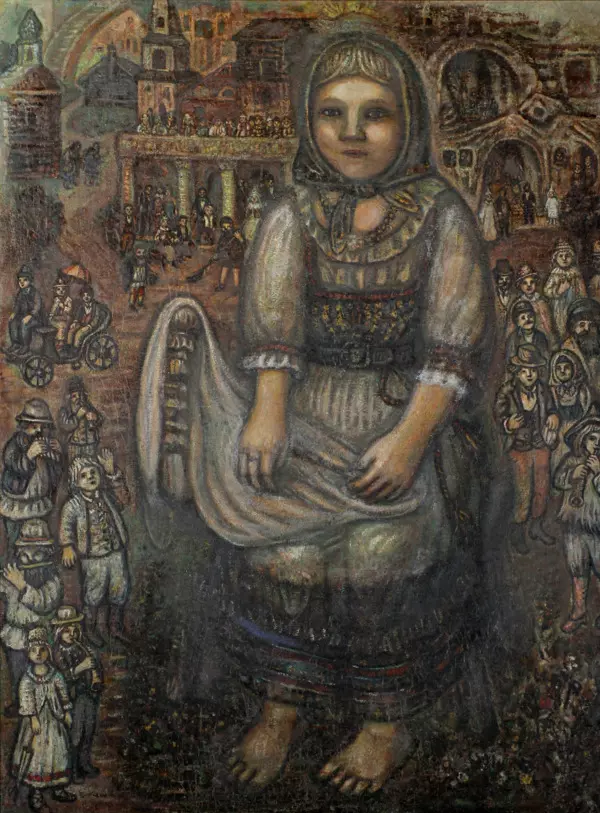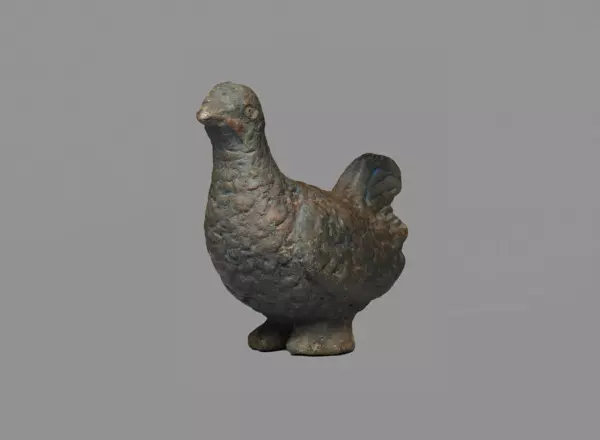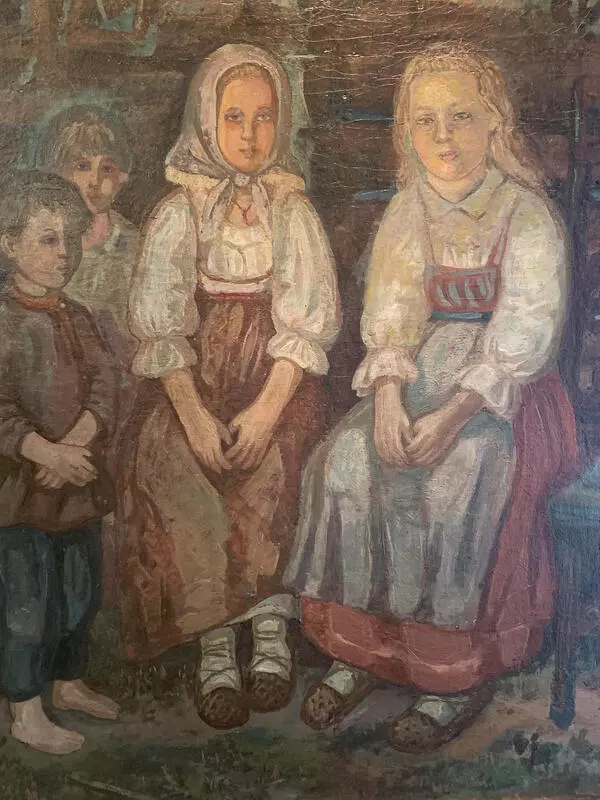The main subjects of Yefim Chestnyakov’s art works are primarily women and children, and at times, the elderly. This was by design and not by chance. Yefim Chestnyakov was blossoming as an artist during some of the toughest years for Russia: World War I and then the Civil War. Traditionally, a woman’s role was to give birth and raise children. But in the absence of men, she was also responsible for running the entire household and her family’s survival. Children, who are pure and innocent at heart and who do not yet know depravities of real life, look at the world with naive, trusting eyes. And a viewer can perceive all of this in the painting “Women and children”.
Artistic traditions of ancient Russian art, embraced by Yefim Chestnyakov, have not attracted the attention of researchers as yet. Still, on examining his artworks, his approach to compositions and painting techniques, typical of Russian icons and frescos, is readily noticeable. It was not by chance that peasants from Kologrivsky Uyezd placed Yefim Chestnyakov’s drawings and paintings next to icons in their sacred (red) corners. Icons were an integral part of peasants’ spiritual world and a necessity in a Russian log house. The image of the Blessed Virgin was dear to the Russian soul. Even illiterate peasants could easily understand and relate to it. Perhaps, this had an influence on Yefim Chestnyakov’s artistic style. Having learned the foundations of Russian icon painting, he eventually opted for simplified forms and generalized imagery in his own works. His art is thus characterized by expressive minimalism and restraint.
The layout of the painting ‘Women and children’ is reminiscent of a Christian fresco. The Russian peasant women and children, whose faces and entire bodies are facing the viewer, are not standing firmly on the ground as normal people do, instead they appear like saints from frescoes in churches. On comparing the outlines of the depicted females with those in the icons of Virgin Hodegetria, one finds similarities in style in certain elements. The female figures in Yefim Chestnyakov’s painting are depicted with their bodies and faces to the viewer, like in icons. Some of their heads are slightly tilted to the side. In this moving art work, a Russian woman appears to stand before us introducing her child to the world. The faces of the women and children are not tense. Their eyes are not clouded by passions. Their gazes look enlightened as if directed outward from the depths of another world, a spiritual peasant world, which has disappeared forever. Having lived among semi-literate peasants, heavily burdened by hard work, who did not always understand him, Yefim Chestnyakov still saw the roots of spirituality in the faces of his fellow countrymen. Hence, the subjects of his art works look enlightened and resemble those in icons. No other Russian artist was able to elevate Russian peasants as much, almost to sainthood.
Artistic traditions of ancient Russian art, embraced by Yefim Chestnyakov, have not attracted the attention of researchers as yet. Still, on examining his artworks, his approach to compositions and painting techniques, typical of Russian icons and frescos, is readily noticeable. It was not by chance that peasants from Kologrivsky Uyezd placed Yefim Chestnyakov’s drawings and paintings next to icons in their sacred (red) corners. Icons were an integral part of peasants’ spiritual world and a necessity in a Russian log house. The image of the Blessed Virgin was dear to the Russian soul. Even illiterate peasants could easily understand and relate to it. Perhaps, this had an influence on Yefim Chestnyakov’s artistic style. Having learned the foundations of Russian icon painting, he eventually opted for simplified forms and generalized imagery in his own works. His art is thus characterized by expressive minimalism and restraint.
The layout of the painting ‘Women and children’ is reminiscent of a Christian fresco. The Russian peasant women and children, whose faces and entire bodies are facing the viewer, are not standing firmly on the ground as normal people do, instead they appear like saints from frescoes in churches. On comparing the outlines of the depicted females with those in the icons of Virgin Hodegetria, one finds similarities in style in certain elements. The female figures in Yefim Chestnyakov’s painting are depicted with their bodies and faces to the viewer, like in icons. Some of their heads are slightly tilted to the side. In this moving art work, a Russian woman appears to stand before us introducing her child to the world. The faces of the women and children are not tense. Their eyes are not clouded by passions. Their gazes look enlightened as if directed outward from the depths of another world, a spiritual peasant world, which has disappeared forever. Having lived among semi-literate peasants, heavily burdened by hard work, who did not always understand him, Yefim Chestnyakov still saw the roots of spirituality in the faces of his fellow countrymen. Hence, the subjects of his art works look enlightened and resemble those in icons. No other Russian artist was able to elevate Russian peasants as much, almost to sainthood.
